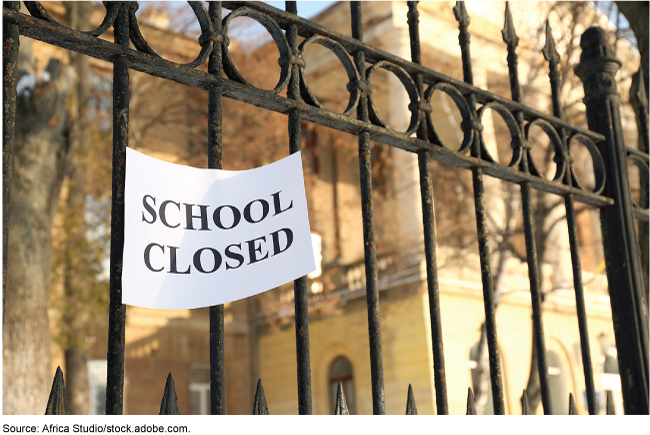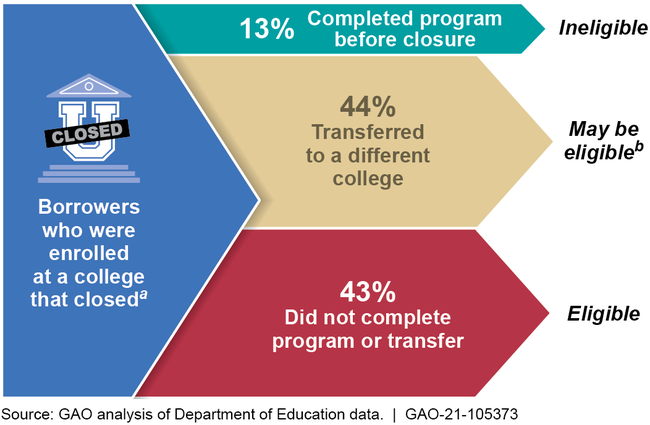College Closures: Many Impacted Borrowers Struggled Financially Despite Being Eligible for Loan Discharges
Fast Facts
When a college closes, students can be left with loans, no degree, and no path forward. Some of those students may be eligible for federal student loan forgiveness through a "closed school discharge" from the Department of Education.
In 2018, Education started offering this loan forgiveness automatically. We testified that the automatic process helped many borrowers struggling to repay their loans. More than 70% of borrowers who eventually received an automatic discharge were in default or past due on their loans.
Education eliminated the automatic process in July 2020, so borrowers impacted by future closures have to apply for forgiveness.

Highlights
Why This Matters
When a college closes, it can derail the education of many students, leaving them with loans but no degree. Those who cannot complete their education may be eligible to have their federal student loans forgiven through a “closed school discharge” from the Department of Education, but this process has changed in recent years.
We examined what happens to borrowers after colleges closed.
Key Takeaways
- About 246,000 borrowers were enrolled at over 1,100 colleges that closed from 2010 through 2020.
- 43% of impacted borrowers did not complete their program before their college closed or transfer to another college—showing that closures are often the end of the road for a student's education.
- Over 80,000 of these borrowers had their loans forgiven through a closed school discharge.
The majority of borrowers who had loans forgiven applied for it, but over 27,600 received relief through a new process that took effect in 2018 which automatically discharged loans for eligible borrowers 3 years after a closure.
The automatic discharge process has provided relief to many borrowers struggling to repay their loans. More than 70% of borrowers who eventually received an automatic discharge were in default or past due on their loans. These borrowers were facing severe financial consequences (e.g., wage garnishments, reduced tax refunds, credit score drops), but may not have been aware that they were eligible for loan forgiveness.
Education eliminated the automatic process in July 2020, so borrowers impacted by future closures will have to apply for forgiveness.
Outcomes for Borrowers Who Attended Colleges That Closed and Their Eligibility for Loan Discharges

aBorrowers refers to students who borrowed federal student loans and met certain eligibility criteria.
bBorrowers are not eligible for a discharge if they are completing or have completed a comparable program at another college. Borrowers who transferred but did not complete their program are eligible for a discharge.
How GAO Did This Study
We analyzed Education data on federal student loan borrowers who were enrolled at colleges that closed from 2010-2020. We reviewed relevant federal laws, regulations, and agency documents. We also interviewed Education officials and subject matter experts.
For more information, contact Melissa Emrey-Arras at (617) 788-0534 or emreyarrasm@gao.gov.
